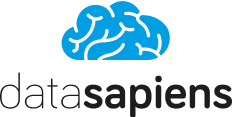Integrating Managed and Outsourced Services: A Strategic Approach to Data Management
Introduction
Welcome back to our ongoing series on leveraging advanced data solutions for business growth. In our previous posts, we explored the transformative power of self-service analytics, customer intelligence, and the strategic alignment of business intelligence. Today, we focus on integrating managed and outsourced services to optimize data handling and analytics.
A Quick Recap on Tiered Data Lakes
As you know from our previous blog posts, datasapiens offers a complete solution with a fully flexible cloud architecture that allows for the ingestion and integration of all available data sources within a three-tier data lake.
The consumption layer supports the required applications and services. Requirements can vary according to the final use case, so it is essential to understand the differences between outsourced services, managed services, and bespoke internal solutions. Here are some examples:
Outsourced Solutions
Outsourced solutions involve hiring an external company to create and manage specific functions. This strategic approach allows organizations to focus on their core business activities while ensuring efficient data management and analytics. For instance, a client might:
Generate a Consumption tier data copy optimized for the external provider in cloud-based data storage. The expenses are relatively low, with the provider bearing the bulk of storage and computational costs.
Compensate the provider to manage the infrastructure and develop and set up the solution.
Managed Services
Managed services offer a middle ground between outsourcing and fully bespoke internal solutions. For example, using AWS Supply Chain, a cloud solution that consolidates data and delivers ML-driven insights, integrated contextual collaboration, and demand planning:
The client pays for an AWS Supply Chain license, with billing based on data volume and the number of product SKU location combinations. Their pricing page offers a comprehensive cost calculator.
The client integrates their current ERP and supply chain management systems.
This approach allows the client to retain control over strategic parts while leveraging capabilities from these managed services.
Custom In-House Solutions
In this scenario, the client develops a custom solution, taking full ownership of a strategic area. For example, they might utilize MLflow, a unified, end-to-end, open-source MLOps platform. The client's responsibilities include:
Model Development and Evaluation: The client can create and evaluate various models using any preferred framework, such as Spark, deep learning, or ChatGPT. Once the best model is identified, it is deployed in production for inference.
Infrastructure Management: The client oversees the operation of the data lake and compute infrastructure, ensuring seamless integration and performance.
Conclusion
Integrating managed and outsourced services enables companies to take more control over their data and analytics destiny without biting off more than they can chew. This strategic approach allows organizations to focus on their core business activities while ensuring efficient data management and analytics.
Get in Touch
At datasapiens, we are committed to helping our clients harness the full potential of their data through the integration of innovative managed services. Contact us today to learn how we can help your organization achieve similar success.



